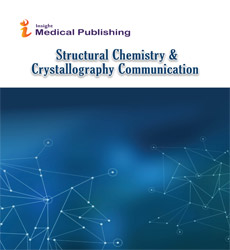Abstract
Increasing of FeS2-pyrite thin films band gap value by alloying with ruthenium
FeS2-pyrite thin films having good crystallinity, high absorption coefficient (∼105 cm−1) and a band gap of about 0.95 eV were synthesized by a simple and low cost method consisting of sulphuration, under vacuum (≅10−4 Pa), of amorphous iron oxide thin films pre-deposited by spray pyrolysis of FeCl3•6H2O (0.03 M)-based aqueous solution onto glass substrates heated at 350 °C. In the aim of improving their properties for their photovoltaic application, we draw attention to increase the band gap of these films by alloying with Ru. We followed two methods: the first one consists of spraying aqueous RuCl3•3H2O solution, during shorter time, on heated pre-deposited oxide layer at the same spray conditions with molar ratio as RuCl3•3H2O:FeCl3•6H2O=x:1−x (x =0.3966, 0.1586,0.0396, 0.0317, 0.0156 and 0.00). The second consists of spraying on heated substrate, an aqueous solution prepared by dissolving ferric chloride (FeCl3•6H2O) and Ruthenium (III) chloride hydrate (RuCl3•3H2O) with molar ratio as RuCl3•3H2O:FeCl3•6H2O=x:1−x (x=0.3171, 0.1586, 0.234, 0.0119, 0.0051, 0.0025 and 0.00). Afterward, the as obtained films are sulphured at the optimum conditions (pressure ≅ 10−4 Pa, duration =6 h, temperature =450 °C). Dark layers having granular structure, were obtained. The effect of alloying on atomic structure, as well as optical properties of Ru-alloyed FeS2-pyrite films were examined by XRD, optical and MEB characterizations. Our results show that the band gap value of Fe1−xRuxS2 layers increases versus the alloy percentage. An optimum band gap value was obtained according to the first method of about 1.48 eV for x=0.0156; which is considered a very interesting result for the photovoltaic applications of our films. An increase of the band gap value versus the Ru concentration with the second method was observed, as well.
Author(s): Beya Ouertani
Abstract | Full-Text | PDF
Share this

Awards Nomination
Google scholar citation report
Citations : 275
Abstracted/Indexed in
- Google Scholar
- China National Knowledge Infrastructure (CNKI)
- Directory of Research Journal Indexing (DRJI)
- WorldCat
- Geneva Foundation for Medical Education and Research
- Secret Search Engine Labs
- CAS (Chemical Abstracting Services)
Open Access Journals
- Aquaculture & Veterinary Science
- Chemistry & Chemical Sciences
- Clinical Sciences
- Engineering
- General Science
- Genetics & Molecular Biology
- Health Care & Nursing
- Immunology & Microbiology
- Materials Science
- Mathematics & Physics
- Medical Sciences
- Neurology & Psychiatry
- Oncology & Cancer Science
- Pharmaceutical Sciences

